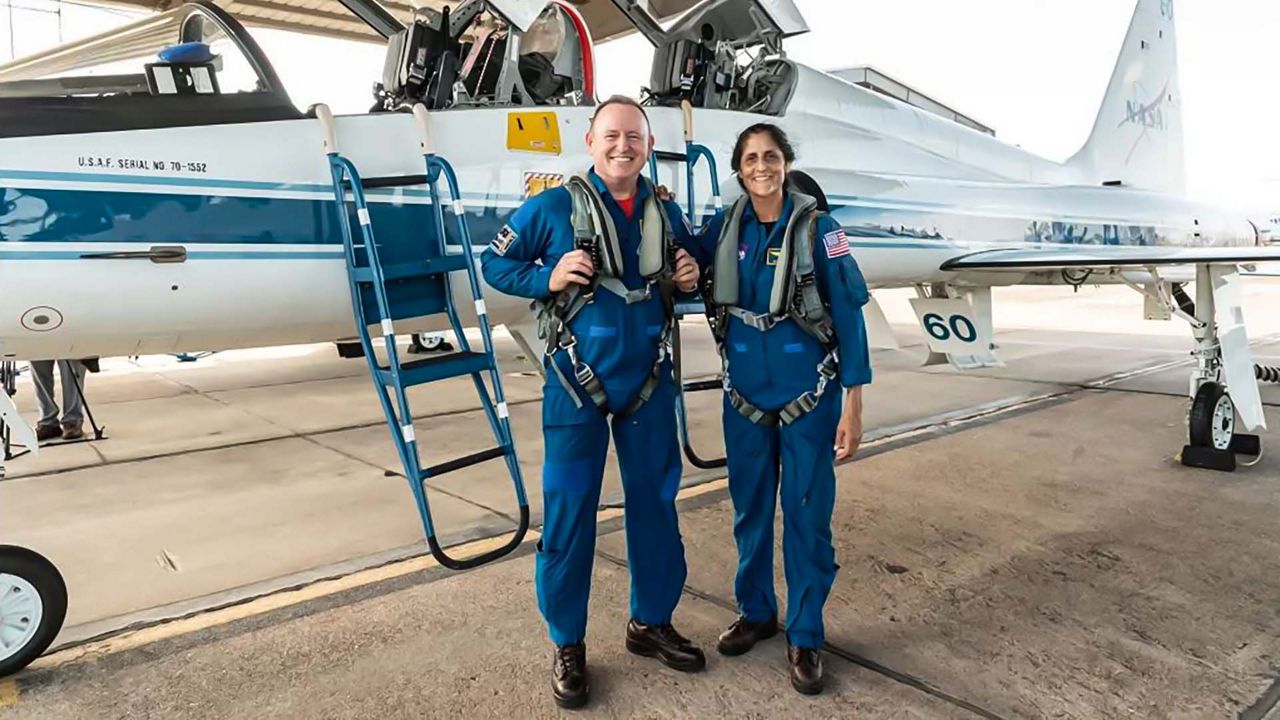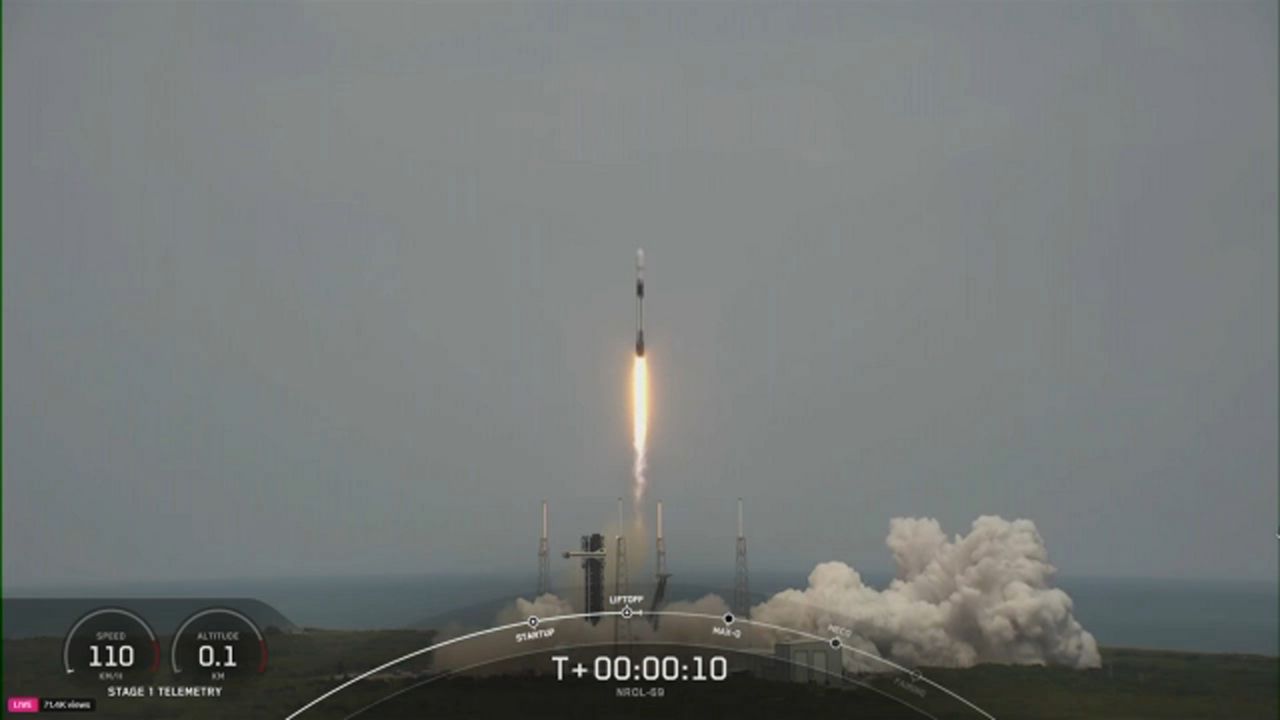CAPE CANAVERAL SPACE FORCE STATION — NASA and Boeing announced their decision to scrub the maiden launch of the company's Starliner spacecraft nearly two hours before liftoff due to an issue with an oxygen relief valve.
Boeing announced Tuesday that the next launch attempt would be Friday, May 10.
“NASA, Boeing, and ULA (United Launch Alliance) are targeting no earlier than Friday, May 10, for launch of the agency’s Boeing Crew Flight Test to the International Space Station, pending resolution of the technical issue that prevented the May 6 launch attempt.
The delay allows teams to complete data analysis on a pressure regulation valve on the liquid oxygen tank of the Atlas V rocket ‘s Centaur upper stage and determine whether it is necessary to replace the valve.”
What You Need To Know
- The new launch time has not been announced yet
- United Launch Alliance’s Atlas V rocket will take off from Launch Complex-41
- This will be the first time that Boeing’s Starliner spacecraft will have a journey to the ISS with people onboard
- Find out why the Starliner spacecraft is named Calypso; this will be the second mission for the craft
- Get more space coverage here ▶
- 🔻Scroll down to watch the launch🔻
ULA Launch Director Tom Heter III made the decision that the launch operations would not continue. During a live feed, NASA stated that there was an issue with an oxygen relief valuve. Depending on the severity of the issue, the next launch attempt could be Tuesday, May 07, or later, stated NASA.
"Today's #Starliner launch is scrubbed as teams evaluate an oxygen relief valve on the Centaur Stage on the Atlas V. Our astronauts have exited Starliner and will return to crew quarters," NASA stated on X, formerlly known as Twitter.
Scroll down to the graphic to see where the Centaur stage is on the stacked rocket.
NASA astronauts Cmdr. Barry “Butch” Wilmore and pilot Sunita “Suni” Williams had just gotten into the Starliner spacecraft when the announcement was made at around 8:34 p.m. ET. They were ready to be sent to the International Space Station with the launch time at 10:34 p.m. ET.
The Crew Space Transportation (CST) 100 Starliner spacecraft named Calypso, while sitting on top of United Launch Alliance’s Atlas V rocket, will take off from Launch Complex-41 at Cape Canaveral Space Force Station, according to NASA.
The 45th Weather Squadron gave a 95% chance of good liftoff conditions, with the only worries being the cumulus cloud rule.
About Starliner and Atlas V rocket
While the Starliner can fit up to seven crew members, for NASA missions it will carry between four to five people.
Each 16.5-foot (5 meter) tall Starliner is designed for up to 10 launch missions and they are made for each assignment, stated Boeing.
The Starliner spacecraft only has two missions under its wide belt: The first Orbital Flight Test in December 2019, which launched well but there was a glitch in the mission-elapsed timer that caused the spacecraft to go into an orbital insertion burn at the wrong time and used too much fuel.
This meant that while it was in a stable orbit, it could not make a rendezvous with the space station.
In fact, the Starliner in the first Orbital Flight Test will be the same one used for this maiden crewed mission. And it is named Calypso after Jacques-Yves Cousteau's oceanography vessel, RV Calypso, stated NASA.
The second Orbital Flight Test in May 2022 was a success and made it to the International Space Station.
After the stage separation, the Atlas V booster will fall into the ocean. Unlike SpaceX rockets, Atlas rockets do not land.
The Atlas V rocket, with the Starliner on top, stands at 171 feet (52 meters) tall. It is a bit smaller than a stacked SpaceX Falcon rocket at 229.6 feet (70 meters).
Understanding the mission
After the launch, the Starliner crew will have a more than 27-hour journey to the ISS, where Calypso will dock on the space station’s Harmony module autonomously, stated NASA.
“During its stay, the crew will evaluate the spacecraft, its displays, and cargo transfer systems. Wilmore and Williams will also go inside Starliner, close the hatch, and demonstrate the spacecraft can perform as a ‘safe haven’ in the case one is needed in the future,” NASA explained.
One of the main objectives of the mission is to demonstrate the Starliner’s ability to launch and land. This will be the first time that the Starliner spacecraft will have a journey to the ISS with people onboard.
Former NASA astronaut and former Boeing CST-100 Starliner Director of Crew and Mission Systems Christopher J. Ferguson was explaining to Spectrum News what Wilmore and Williams will experience as the Starliner launches.
🚀@Boeing’s former #Starliner Director and @NASA astronaut Chris Ferguson was explaining to me what Cmdr. #Wilmore and pilot #Williams will experience during liftoff and what went into this maiden launch.
— 🚀Anthony Leone🌕 (@AnthonyLeone) May 6, 2024
Read more at @MyNews13: https://t.co/NgEcqfLybZ pic.twitter.com/J1ZeaV0yze
Artemis II mission specialist Jermey Hansen shared his thoughts with Spectrum News about the Boeing mission and what it means for him to go into space for the first time. And his first mission is the Artemis II, where humans will return to orbit the moon.
#ArtemisII Mission Specialist Jeremy Hansen was telling me what makes @BoeingSpace’s #Starliner mission special and his thoughts of going to space for the first time and not just the first time but also orbiting the #moon.
— 🚀Anthony Leone🌕 (@AnthonyLeone) May 7, 2024
Find out more @MyNews13 https://t.co/NgEcqfLybZ pic.twitter.com/wzejVsGP9K
This mission is part of NASA’s Commercial Crew Program, which is designed to work with American aerospace companies to build spacecraft and rockets to send equipment, technology and astronauts from American soil.
“The goal of the program is to provide safe, reliable, and cost-effective transportation on space station missions, which will allow for additional research time,” NASA stated.
United Launch Alliance is the joint business venture between Boeing and Lockheed Martin, which are famed for the Atlas V and the now-retired Delta IV Heavy rockets and the new Vulcan rockets.
“In 2014, Boeing was awarded up to $4.2 billion by NASA to build, test and fly the Starliner. The contract includes six service missions, as well as an uncrewed and a crewed flight test to the ISS,” Boeing stated in a 51-page document.
Both Wilmore and Williams will be at the ISS as part time Expedition 71 members for about a week before they climb back onboard the Starliner and return to Earth.
(ISS expeditions are missions that can last about six months.)
The Starliner will have a “hard landing” in the American Southwest. Its parachutes will slow it down to 4 mph before touching the earth again. The exact location has not yet been disclosed.
Getting to know the crew

The crew for this mission is no strangers to being in space. Wilmore, the commander of the Crew Flight Test mission, became a NASA astronaut in July 2000.
The retired Navy veteran has been on the Atlantis shuttle mission STS-129 in 2009 and two ISS Expedition missions: 41 and 42 between 2014 and 2015.
Williams will be the pilot for this first voyage of the crewed mission. The Ohio native was selected to be a NASA astronaut in 1998 and has been on two ISS missions: Expeditions 14 and 15 in 2006 and 2007. And then 32 and 33 in 2012.
“Williams, who has spent a 322 total days in space, ranks sixth on the all-time U.S. endurance list, and second all-time for a female astronaut,” Boeing stated of the former retired Navy test pilot and captain.








